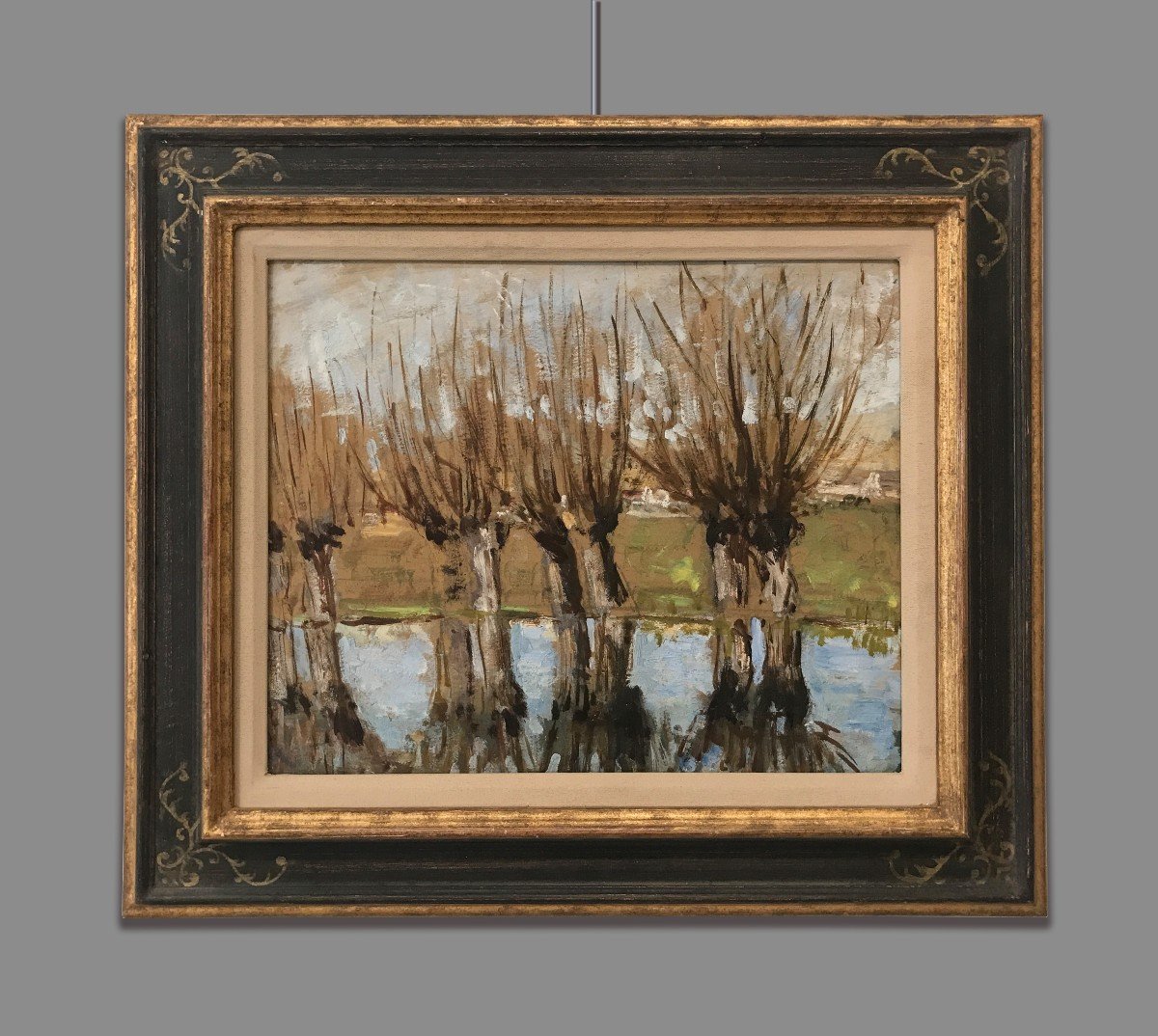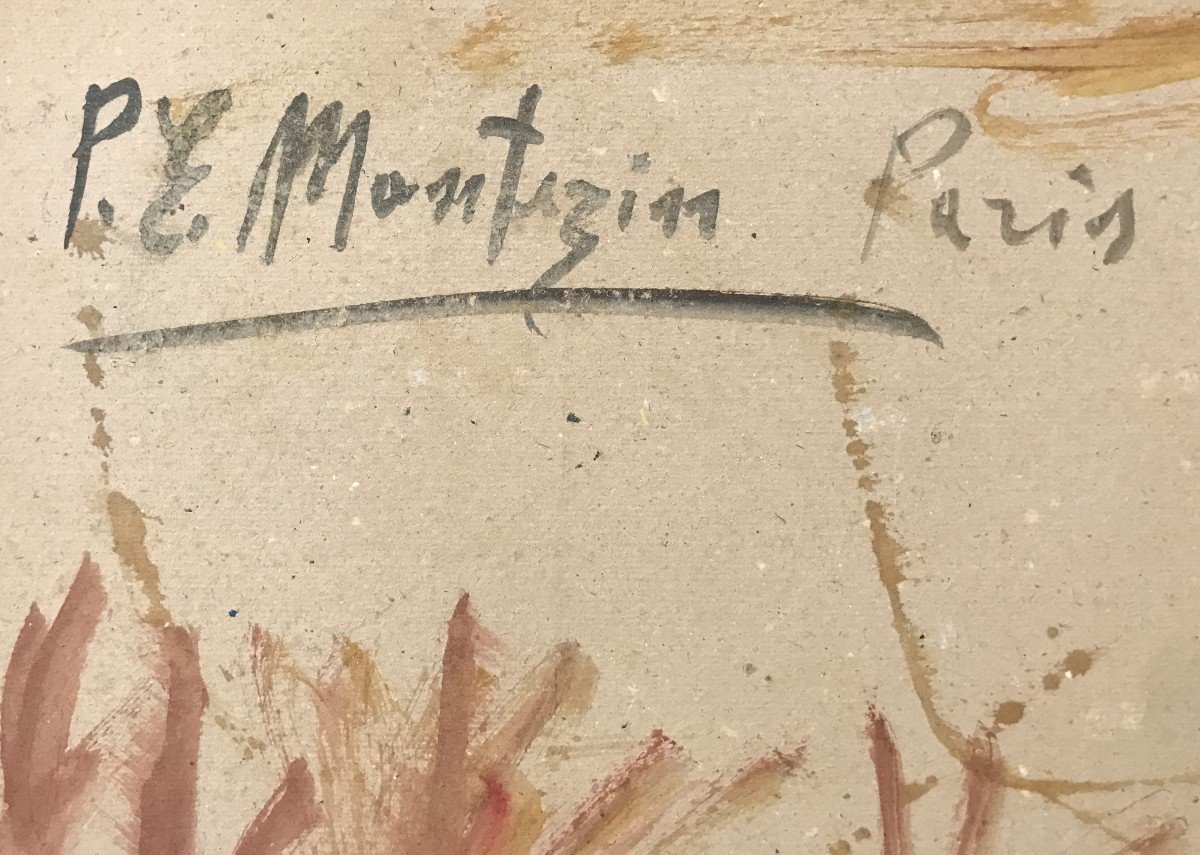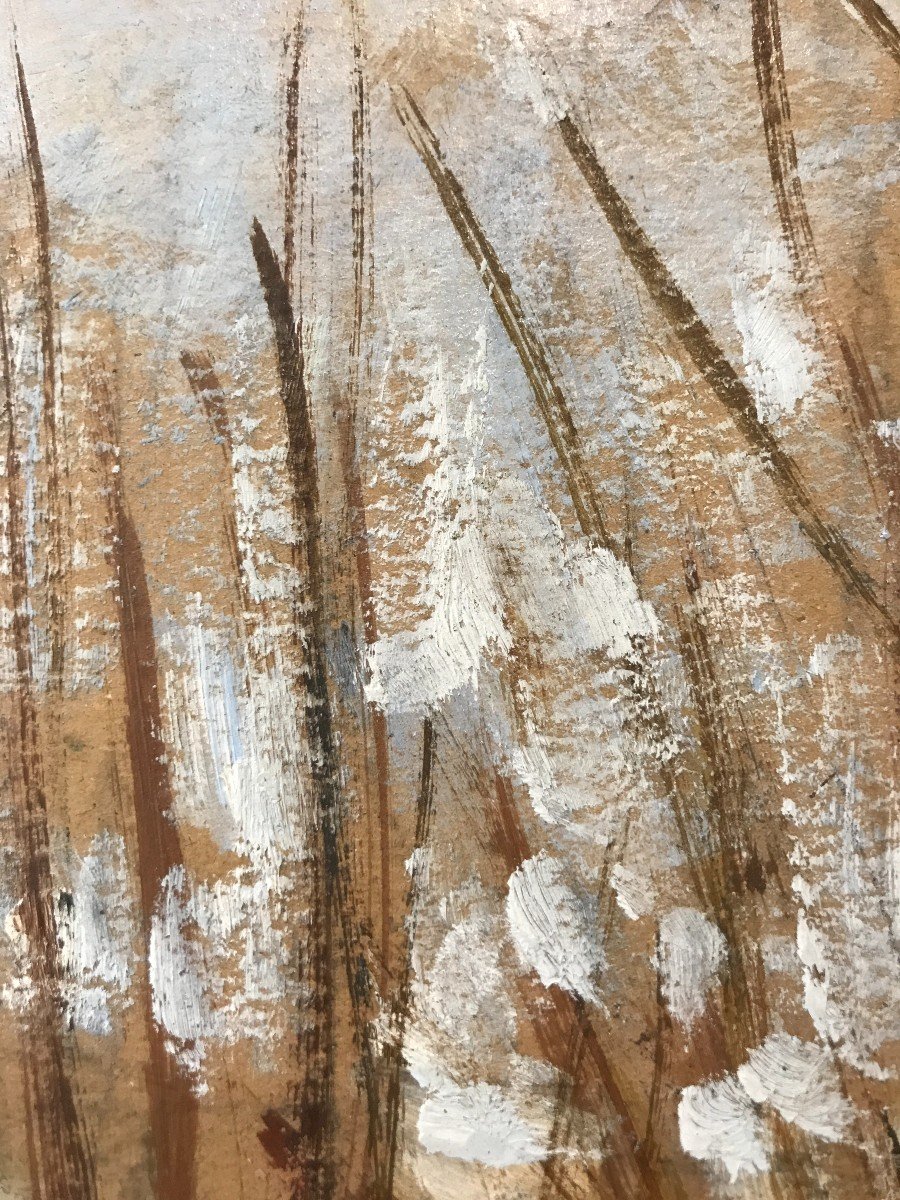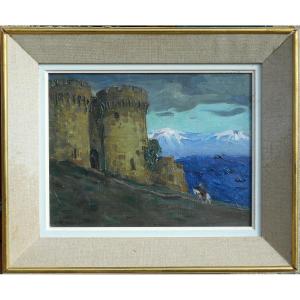With frame 51 x 58 cm
Signed and place indication on the back
Authentic: Jean-Pierre Klein Montezin, grandson of the artist, Paris, 1992. (Certificate no. 241). The work will be published in the catalog raisonné currently being prepared by J.P.K. Montezin.
Exhibition: "Les Artistes des Salons de Paris – opere 1850-1950” (Bergamo, Centro Culturale S. Bartolomeo, 6-28.11.2004)
Publication: Les Artistes des Salons de Paris – opere 1850 – 1950, a cura di R. Bellini, Bergamo, Galleria Michelangelo, Galleria d’arte Due Bi, 2004, p.67
Thanks to his father, a lace designer, he enters a decoration studio where he learns the technique
of mural painting. The employer urges him to study the theories of the Impressionists until
Montezin left his job to devote himself completely to the art of painting.
An artist very sensitive to the charm of natural light, his favorite subjects are above all landscapes in which he applies the principles of painting "en plein air". He looks a lot at Monet whom he considers the ideal teacher, applying the draft in his turn to small touches and imprisoning the light in a colored net; this is particularly noticeable in the paintings depicting the effects of snow, ponds and water mirrors where the reflections, the colors of the atmosphere and the environment can be better captured.
In 1893 he sent a work to the Salon des Artistes Français but was refused; it will only be admitted from 1903. It is on this very date that he makes friends with Quost who teaches him the art of drawing and transmits his taste for painting.
In 1907 and 1910 he received the third and second class medal at the Salon des artistes francaise. He has been involved in the war since 1914 and only at the end of the conflict does he resume painting, moving to Dreux and then to Moret, where he usually spent the summer. In the paintings of this period we note the influence of Alfred Sisley who had spent his last period in Moret-sur-Loing, near the forest of Fontainebleau. In 1920 he received the Rosa Bonheur Prize at the Salon and was admitted as a member out of competition. After receiving the medal of honor, he is elected a member of the Committee and of the Jury.
In 1923 he was awarded the title of Knight of the Legion of Honor and in 1927 he was appointed president of the Salon de l'Union des Beaux-Arts in Lagny-sur-Marne, in the Ile de France. From 1930 to 1938 he exhibited with the group, which included painters who, despite the diversity of expression, can be united under the label of "Neo-Impressionists". In 1933 he was unanimously elected President of the jury of the Salon des artistes francaise; on the occasion of the ceremony, an exhibition with 237 works is organized for him. In 1936 he exhibited in Paris at the Galerie du Journal, in 1938 at the Galerie Durand-Ruel, and in 1943 at the Galerie Raphaël Gérard.
In 1940 he became a member of the Paris Academy of Fine Arts.
He is a close friend of Fernand Pinal, a pupil of the pointillist Henri Martin who, speaking of his bond with Montezin, will say: "the friendship with which he wanted to honor me until death makes me keep a precious and moving memory of these Senna and Loing, where, during the summer of 1941, I had the opportunity to plant my easel next to hers ”.
Faithful throughout his career to the principles of Impressionist painting, he never let himself be tempted by emerging movements such as Cubism, Surrealism or Abstractionism.
Like Cézanne, he suddenly dies while he is painting outdoors.
The painting is in very good condition.
We remain at your disposal for further information.














































 Le Magazine de PROANTIC
Le Magazine de PROANTIC TRÉSORS Magazine
TRÉSORS Magazine Rivista Artiquariato
Rivista Artiquariato